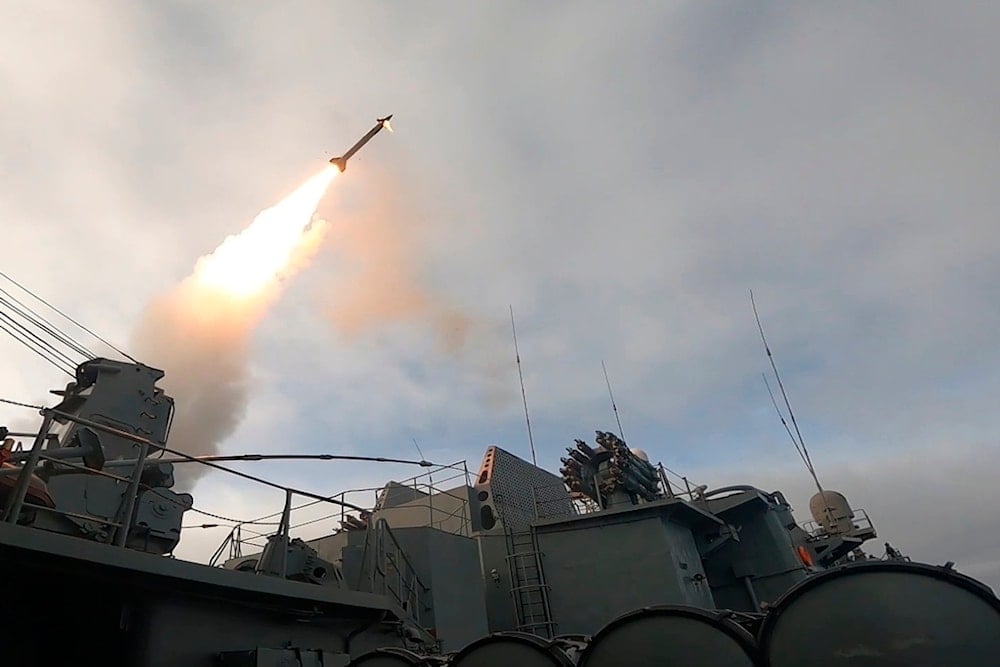Putin approves strategy to restore Russia as global naval power
Russian President Vladimir Putin has approved a naval development strategy through 2050 aimed at restoring Russia's maritime dominance amid rising global military competition.
-

In this photo taken from a video released by the Russian Defense Ministry press service on Thursday, September 12, 2024, the Russian destroyer Vice-Admiral Kulakov launches a missile in the Arctic Ocean. (AP)
Russian President Vladimir Putin has approved a long-term naval development strategy aimed at restoring Russia’s status as a global maritime power, according to Kremlin aide Nikolai Patrushev. The new doctrine, titled “The Strategy for the Development of the Russian Navy up to 2050,” was signed off by Putin in late May, Patrushev said in an interview published Monday in Argumenti i Fakti.
“Russia's position as one of the world's greatest maritime powers is gradually recovering,” said Patrushev, a close Putin ally and former KGB officer. “It is impossible to carry out such work without a long-term vision of the situation in the oceans, the evolution of challenges and threats, and, of course, without defining the goals and objectives facing the Russian Navy.”
Though Patrushev did not disclose specific elements of the strategy, the announcement comes amid a major increase in Russian defense spending, now approaching Cold War-era levels relative to GDP.
Despite setbacks during the war in Ukraine, including the loss of several high-profile vessels, Russia still retains the third-most powerful navy in the world, following China and the United States, according to most open-source military rankings. Russia’s naval assets reportedly include 79 submarines, 14 of which are nuclear-powered ballistic missile subs, and 222 warships. Its primary force, the Northern Fleet, is based in Severomorsk on the Barents Sea.
The US Department of Defense previously estimated that China’s navy would expand to a 460-ship battle force by 2030. Russia’s new strategy is expected to be a response to the growing competition on the world’s oceans, particularly in the Arctic and Pacific regions.
Russia, China, Iran partake in naval drills
Russian and Chinese warships in March entered the Persian Gulf to participate in joint military exercises alongside Iran's naval forces and the Islamic Revolutionary Guard Corps (IRGC). The 7th edition of the Marine Security Belt drills, involving Russia, China, and Iran, took please place in the northern part of the Indian Ocean.
Several countries observed the drills, including Azerbaijan, South Africa, Oman, Kazakhstan, Pakistan, Qatar, Iraq, the United Arab Emirates, and Sri Lanka.
The drills focused on enhancing regional security and strengthening military coordination as a range of naval operations was conducted, including search and rescue missions, counter-piracy maneuvers, and artillery exercises.
China's naval forces contributed a destroyer and a supply ship, while Russia deployed two corvettes and a tanker for the training exercises.

 3 Min Read
3 Min Read










